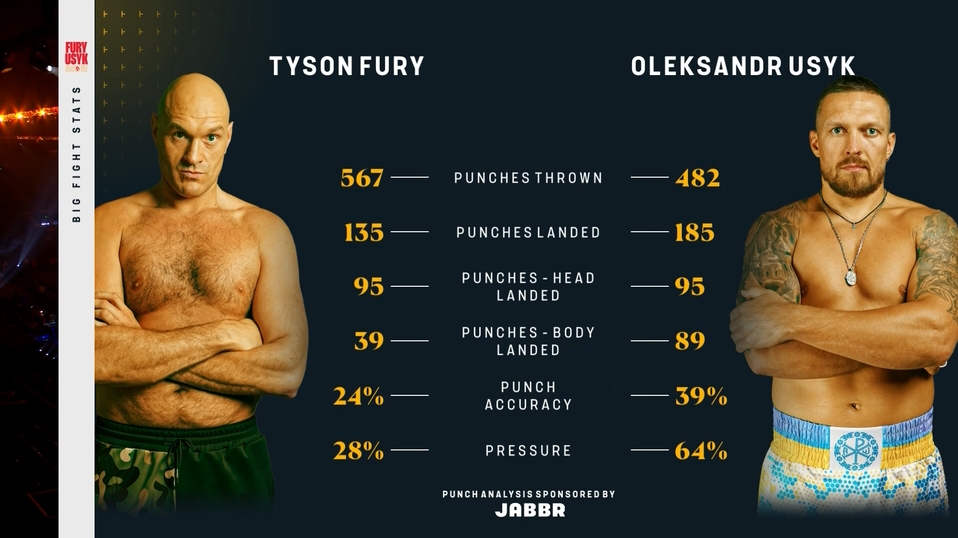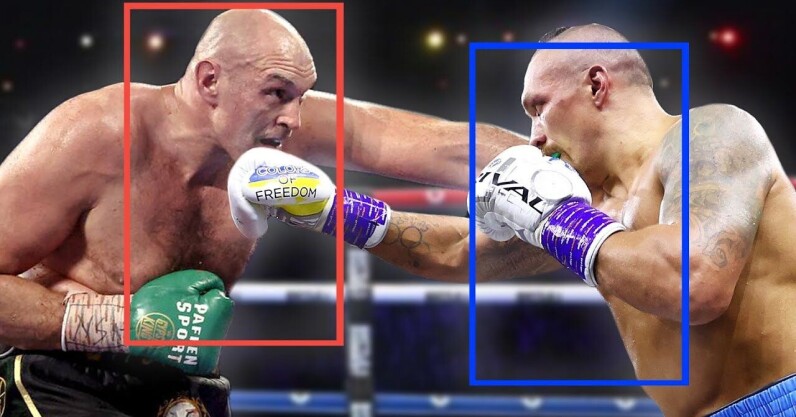Boxing is a whimsically old-fashioned sport. Feuds are settled in fights, traditions are revered, and ageing faces run the show.
Fifty years since their heydays promoting Muhammad Ali, the 92-year-olds Don King and Bob Arum remain leading powerbrokers. They work with overlords who operate in the shadows. In this world, oversight is resisted and new tech greeted with suspicion.
At world title fights, judges still fill out scorecards on scraps of paper. They follow four extremely subjective criteria: “effective aggression,” “ring generalship,” “clean punches,” and defence. All these concepts are open to interpretation. Inevitably, they frequently create controversial decisions.
The problem extends to the sport’s top analytics tool. Despite the futuristic sheen of the CompuBox name, its stats are manually created by two people tapping keys when they see punches. The potential for biases and errors is endless.
Fans and fighters alike have decried the results for decades. One of them is Allan Svejstrup, a Danish machine learning engineer. But Svejstrup (pronounced Svar-strop) also had an idea for a solution: computer vision.
A boxing aficionado with a PhD in maths, Svejstrup had his brainwave while working at a startup in China. “I also had the CompuBox doubts,” he tells TNW on a Zoom call from the Chinese city of Shenzhen. “I realised I could build a better system myself.”
He began to train an AI model on real boxing footage. The model then tracked not only the number of punches but also their impact, the fight’s flow, and each boxer’s movements.
Svejstrup was impressed by the early tests. In 2022, he turned the passion project into a startup: Jabbr.
Two years later, his brainchild had evolved into a fully-grown product. In the new boxing mecca of Saudi Arabia, Jabbr received a showcase during a fight for the heavyweight championship of the world.
But before arriving on that grand stage, the company had bouts to win outside the ring.
Hard knocks
Boxing presents big barriers to AI analysis. One emerges when evaluating punches and ringcraft, which are far harder to measure than, for instance, baseball pitches or golf shots.
“I understood why nobody else had done it successfully,” Svejstrup says. “The standard off-the-shelf tools that machine learning engineers use for soccer or basketball don’t work very well for combat sports.”
Another problem is the visual phenomenon of occlusion.
In computer vision, occlusion occurs when one object conceals the view of another. It’s rarely an issue when evaluating a tennis shot or home workout (as I know from personal experience). These applications can rely on off-the-shelf products that are fine-tuned on sports data. For boxing, however, they’re ill-fitting tools.
Occlusion is particularly troublesome when fighters get close and trade body shots. From one angle, a powerful body shot could be hidden and misclassified as missed. Jabbr’s solution combines multiple cameras with a novel approach to visualisation. Svejstrup named the system DeepStrike.
The company has already established partnerships with MMA organisations, but Malik is also targeting boxing. “I like to say if somebody gets punched in the face we’re there to extract data,” he says.
That approach could create a competitor to Jabbr. But the two startups have very different business models.
Combat IQ focuses on delivering new experiences to viewers and odds to betting companies. “I’m here to make money, to be frank,” Malik admits. “I love sports, but at the same time, I want to build a sustainable business and do right by my investors. That means focusing on the aspects of sports that are profitable. And for me, that’s fan engagement and betting.”
Back to the gym
Jabbr has taken a different stance to Combat IQ. “Our primary target consumers are athletes and coaches,” Svejstrup says.
Svejstrup has shown Jabbr to boxers at the gyms where he trains in Shenzhen. “All the jaws just drop down,” he says. “That feels so different; it’s something millions of people care about.”
These people and places have become the focus of Jabbr’s plan. The startup will soon launch a commercial product comprising three cameras and an integrated timer unit. Users will not only access AI analytics. The “Jabbr Cam” will also provide automated media production.
This feature offers private clubs a simple and affordable tool to stream fights online. They can also generate highlights for each fighter in a social media-friendly format, alongside a full stats package.
“Because the AI already knows everything that’s happening, it’s not that hard to build an automated media production crew,” Svejstrup says. He plans to launch the system in September. Jabbr will sell the product at cost and then charge a subscription fee for the service.
“The benefit of the system is the speed and automation,” he says. “You get all these super detailed stats right away and you don’t have to pay a tonne of money.”
Last month, that speed was tested on the biggest fight in boxing.
From Shenzhen to Saudi
In the desert city of Riyadh, Jabbr debuted on the global stage. British broadcaster TNT Sports used DeepStrike during the historic bout between Tyson Fury and Oleksandr Usyk. The showdown was the first undisputed heavyweight title fight for 24 years.
DeepStrike provided a user-friendly coverage enhancement. Unlike private gyms, TNT Sports required no extra equipment to install the system. The company simply sent its camera feeds to the cloud for AI analysis. The system then immediately returned the data.
As the fight progressed, Jabbr added extra insight to the broadcast. In the end, the judges awarded Usyk a razor-thin victory. Jabbr’s analytics suggest they got the right result — albeit by too narrow a margin.
The startup’s experimental predictions have also attracted attention. Before another heavyweight fight, DeepStrike indicated that Chinese colossus Zhilei Zhang would defeat the betting favourite Deontay Wilder. When Wilder was dominated and knocked out, the AI forecast was vindicated.
“When DeepStrike applies information about the impact of each of these punches landed, suddenly it can predict the results very, very well,” Svejstrup says.
Jabbr’s Saudi adventures have put the startup in the limelight. Turki Alalshikh, the mastermind of the kingdom’s boxing strategy, has shared the analytics with his 6.8 million followers on X. TNT Sports has also provided mainstream promotion for the brand.
Fans are now requesting new applications for the system.

Judge me not
Jabbr’s arrival has triggered calls for AI to replace judges. One viral moment arrived when Tony Jeffries, an Olympic medallist turned boxing influencer, touted DeepStrike as an alternative scoring system.
“That’s not the plan,” Svejstrup says. “Hopefully, it’ll bring some transparency to the sport and maybe even a bit of fairness when there’s a little bit of accountability there. But the real goal is to make this available to everyone.”
Broadcasters will nonetheless remain a target market for Jabbr. They can also provide powerful exposure — and not only for the startup. Radio Rahim wants them to also expose bad judges.
“The entire time I’ve been covering boxing, the lack of transparency has been like an albatross around our neck,” he says. “We’re now heading towards eradicating the subjectivity of what happened in the fight.”
For all the judges still scribbling scores on scraps of paper, Jabbr promises to not replace them. But their old-fashioned sport now faces ultra-modern scrutiny. Just wait till Don King and Bob Arum find out.



